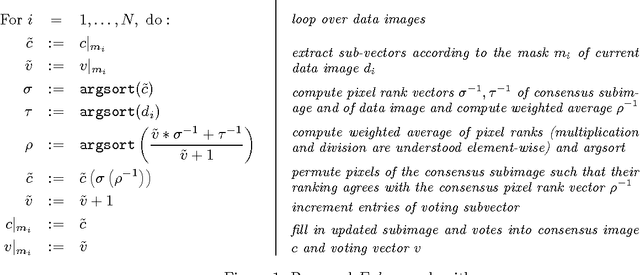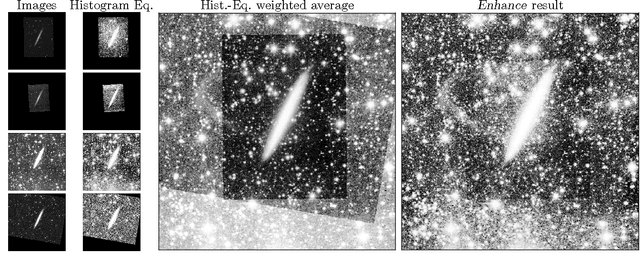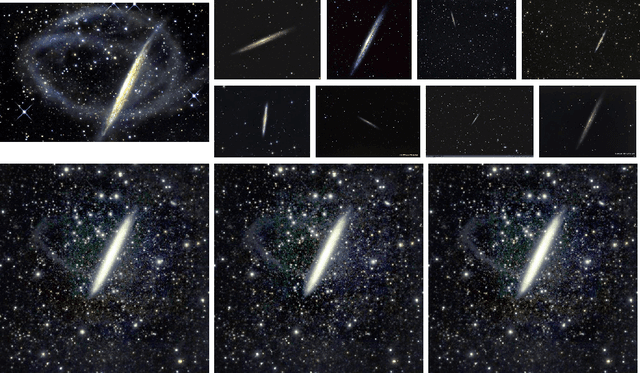Towards building a Crowd-Sourced Sky Map
Paper and Code
Jun 05, 2014



We describe a system that builds a high dynamic-range and wide-angle image of the night sky by combining a large set of input images. The method makes use of pixel-rank information in the individual input images to improve a "consensus" pixel rank in the combined image. Because it only makes use of ranks and the complexity of the algorithm is linear in the number of images, the method is useful for large sets of uncalibrated images that might have undergone unknown non-linear tone mapping transformations for visualization or aesthetic reasons. We apply the method to images of the night sky (of unknown provenance) discovered on the Web. The method permits discovery of astronomical objects or features that are not visible in any of the input images taken individually. More importantly, however, it permits scientific exploitation of a huge source of astronomical images that would not be available to astronomical research without our automatic system.
 Add to Chrome
Add to Chrome Add to Firefox
Add to Firefox Add to Edge
Add to Edge